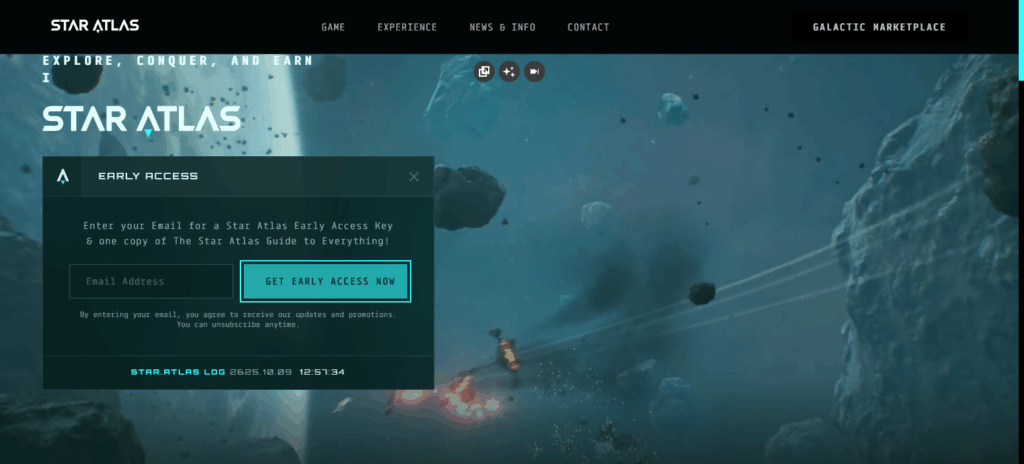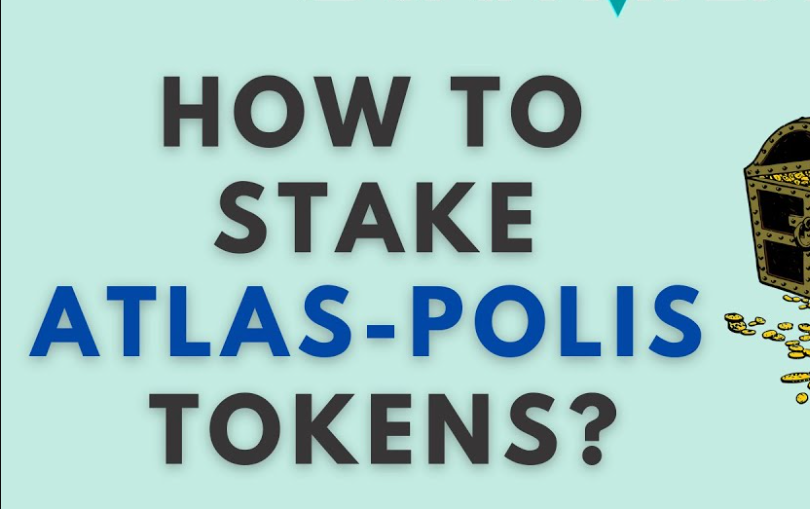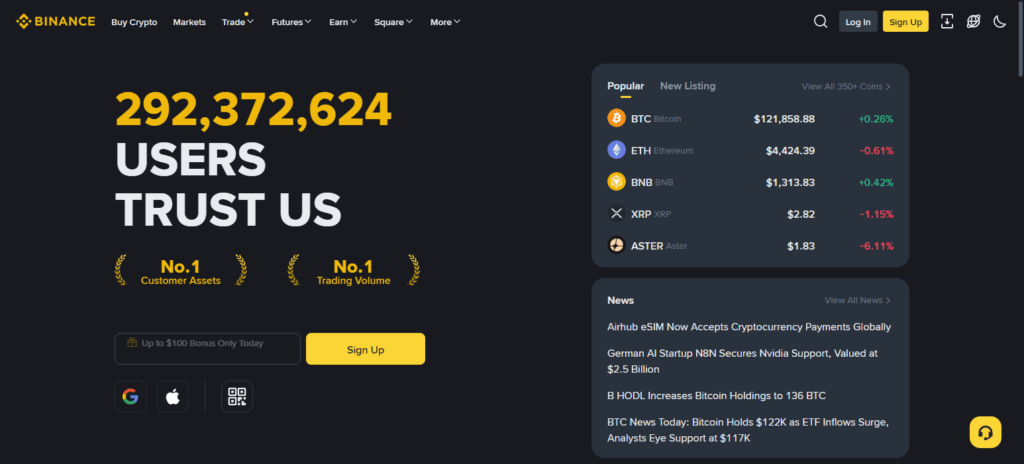I will talk about the various methods of How to Stake Star Atlas Tokens while explaining the different processes in a systematic manner for a beginner.
As an staker, you will earn rewards by locking your ATLAS tokens within the Star Atlas network and in return, you will also support the blockchain operations. If you are a new crypto stakeholder or someone looking to expand your crypto portfolio, you will find this guide quite handy and pragmatic for efficient and safe staking.
What is Staking Star Atlas Tokens?
Star Atlas (ATLAS) tokens can be staked by locking your ATLAS assets in the Star Atlas ecosystem to assist in the network functionality and governance. Staking is the means by which users help secure the Solana-based blockchain, validating transactions and the entire Solana ecosystem in the process.
Passive income is created by the staked assets which allows the staker to earn rewards that are usually in the form of ATLAS tokens. The Star Atlas ecosystem can be accessed in a more immersive way by engaging on a stake.

They can lend the participant voting rights on certain ecosystem decisions, grant access to unique features, or host events. In contrast to mining which is a proof of work and is resource exhaustive, staking has a lower energy draw and is available to all holders of ATLAS tokens in a supported wallet.
In addition, users have the option of a flexible or a fixed staking period tailored to the user’s objectives, reconciliating reward aspiration with liquidity demands. Ultimately, being a staker of ATLAS tokens enables one to actively participate in the Star Atlas universe while continuing to grow their crypto portfolio.
How to Stake Star Atlas Tokens

Step 1: Set Up a Compatible Wallet
Create a crypto wallet with support for Solana-based ATLAS tokens. Recommended options are Phantom or Solflare. Remember to keep a record of your wallet’s seed phrase.

Step 2: Acquire Star Atlas (ATLAS) Tokens
ATLAS tokens can be bought from Binance, KuCoin or Gate.io. Ensure the tokens are transferred to your wallet.

Step 3: Connect Wallet to the Staking Platform
Visit the official Star Atlas website and go to the staking portal. After that, connect your wallet to it. Ensure that you have the correct website to avoid phishing attacks.
Step 4: Select Amount and Staking Duration
Choose the number of ATLAS tokens to stake. Sometimes, you can choose from flexible or fixed staking durations which will help you with either short-term or long-term earning goals.
Step 5: Approve and Stake Tokens
Once you confirm the staking details, approve and confirm the transaction in your wallet. Your tokens are now stuck, earning rewards on autopilot.
Step 6: Manage your rewards
Check the staking rewards you have accrued on the portal to monitor your rewards. Rewards are given on a periodic basis, and you can choose to either restake or withdraw.
Tips for Safe and Efficient Staking
Preferable Wallets
Use wallets like Phantom or Solflare and never share your seed phrase publically, preferably kept offline.
Phishing Scams:
Only stake using the official Star Atlas staking portal and ignore other sources claiming to offer Star Atlas staking.
Tokens Duration Lock
Understand the duration to stake your tokens and withdrawal to avoid unlocking tokens after longer duration.
Rewards Monitoring
Always start with smaller stake amounts of ATLAS for staking practice before using bigger amounts.
Rewards Tracking
Keep track of your tokens and other earned rewards to avoid missing on restaking or withdrawal opportunities.
Staking Program Changes
Follow Star Atlas for announcements related to the staking program, rewards, or network modifications.
Risk & Consider
Market Risks
The ATLAS token value is not static and can change at any time which can influence the value of your stake holdings.
Lock-Up Staking
Certain staking methods may require you to set aside a specific number of tokens which can then be staked for the specified duration.
Network Risks
Any technical failures or maintenance being done on the Star Atlas blockchain or on the Solana network can delay access to the tokens or staking rewards.
Account Funds
Using unverified and or unsecured platforms can result in your staked tokens being lost due to hacking or the account being compromised.
Changes in Staking Rewards
Staking rewards are not guaranteed and can change due to the network conditions or the overall change in the number of users participating in the protocol.
Common Staking Mistakes to Avoid
Staking on multiple platforms
Using unofficial sites may result in a loss of tokens.
Ignoring Lock Up Terms
Not understanding withdrawal terms can result in tokens not being access in a timely manner.
Over Staking
Staking more tokens than one can afford to is a good way to put yourself in a lot of financial trouble.
Neglecting Staking Security
An easily guessable password along with an unsecured wallet can result in loss of tokens.
Ignoring Rewards
Leaving rewards unattended may result in missing chances to compound or restake.
Over Accounting Staking Fees
Not taking into consideration network or withdrawal fees can increase the loss on staking.
Pros & Cons
| Pros | Cons |
|---|---|
| Earn passive income through staking rewards in ATLAS tokens. | Tokens may be locked for a fixed period, limiting liquidity. |
| Contribute to securing the Star Atlas network and supporting the ecosystem. | Market volatility can reduce the value of staked tokens. |
| Energy-efficient compared to traditional mining. | Staking rewards can fluctuate based on network participation. |
| Opportunity to gain voting rights and participate in ecosystem governance. | Using unofficial platforms can expose tokens to hacks or scams. |
| Accessible to beginners with minimal technical knowledge. | Staked tokens cannot be used for other investments, leading to opportunity costs. |
Conclusion
The staking of Star Atlas (ATLAS) tokens is useful for both newbies and experienced users to earn passive income while contributing to network security and growing. Earning maximized and safe staking benefits comes from secure and step-by-step setting up a compatible wallet, purchasing ATLAS tokens, connecting to the official staking platform, and monitoring rewards.
For a smooth staking experience, understanding lock-up periods, risk management, and common mistakes is vital. In comparison to other staking tokens, staking ATLAS will enable users to earn ATLAS tokens while actively participating in the Star Atlas ecosystem and all future developments.
FAQ
Which wallets can I use to stake ATLAS tokens?
Popular wallets include Phantom and Solflare, both of which support Solana-based tokens like ATLAS.
What is staking Star Atlas (ATLAS) tokens?
Staking ATLAS tokens means locking your tokens in the Star Atlas network to support blockchain operations and earn rewards in return.
How are staking rewards calculated?
Rewards are usually based on the amount of ATLAS staked, the staking duration, and network participation rates.
Are there risks associated with staking ATLAS tokens?
Yes, risks include market volatility, lock-up periods, platform security issues, and fluctuating rewards.







